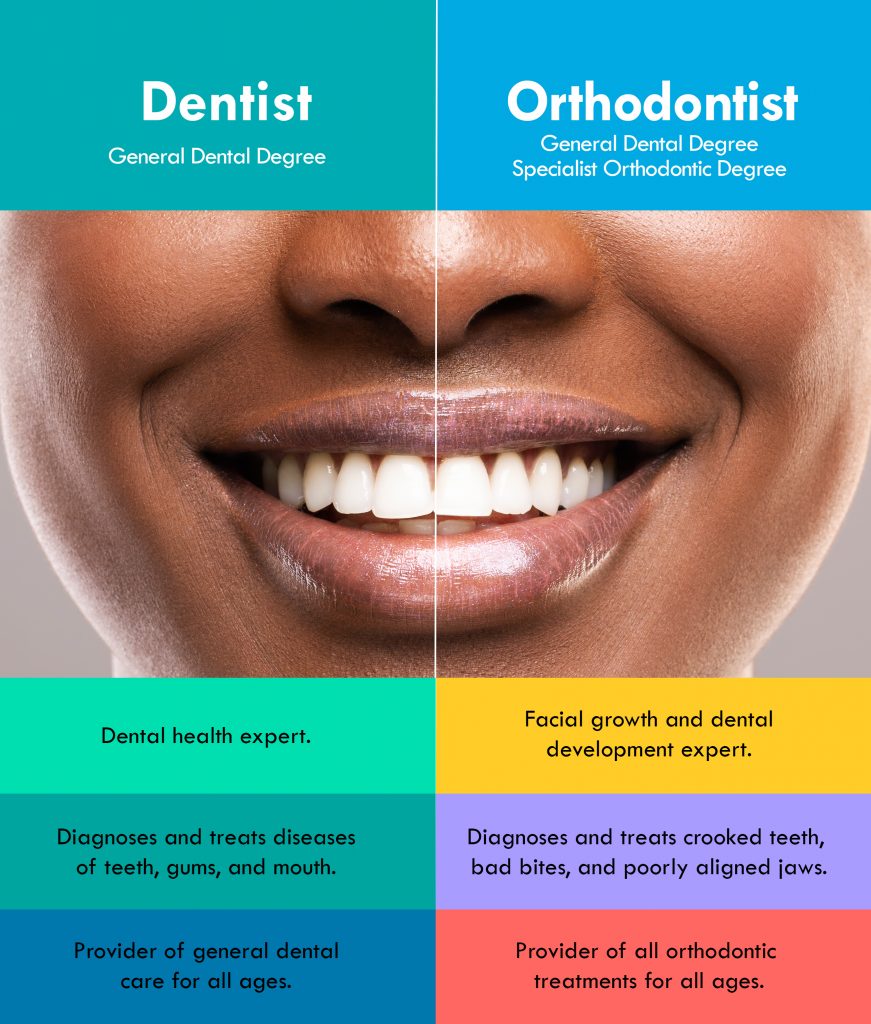Some Known Incorrect Statements About Legacy Orthodontics
9 Simple Techniques For Legacy Orthodontics
Table of ContentsSome Known Details About Legacy Orthodontics Facts About Legacy Orthodontics RevealedLegacy Orthodontics Things To Know Before You Get ThisEverything about Legacy OrthodonticsThe Best Strategy To Use For Legacy Orthodontics
At Advanced Orthodontics, we provide individuals with a holistic treatment experience. Additionally, we provide flexible treatment timetables, flexible settlement options and a fun, satisfying experience. leesburg clear braces. Telephone call ( 480) 357-4900 today for additional information and routine a visit.An orthodontist is a dental expert trained to identify, prevent, and deal with teeth and jaw abnormalities. Orthodontists work with people of all ages, from youngsters to adults.
Malocclusion, or misaligned teeth, can cause dental problems, including dental cavity, gum condition, and difficult or painful eating. Not every person is birthed with straight teeth. If you have a negative bite or huge spaces between your teeth, you might want to consult a dental expert specializing in orthodontic care.
Some Known Questions About Legacy Orthodontics.
( Image Credit: DigitalVision/Getty Images) Orthodontists use dealt with and removable oral devices, like dental braces, retainers, and bands, to transform the position of teeth in your mouth. Orthodontic treatment is for dental irregularities, consisting of: Uneven teethBite problems, like an overbite or an underbiteCrowded teeth or teeth that are as well far apartJaw misalignmentThe goal of orthodontic treatment is to improve your bite.
While you might assume of orthodontists as generally for kids or young adults who require dental braces, they can fix dental issues at any kind of age. Orthodontists participate in college, dental school, and orthodontic institution.
, however not all dental practitioners are orthodontists. They concentrate on two areas: Just how to correctly and securely relocate teeth Exactly how to correctly assist growth in the teeth, jaw, and faceOnce an orthodontist has finished training, they have the alternative to come to be board accredited.
Some Of Legacy Orthodontics
Misalignment, or malocclusion, is one of the most typical reason people see an orthodontist. It is hereditary and is the result of size distinctions in between the top and reduced jaw or between the jaw and teeth. Malocclusion brings about tooth congestion, a twisted jaw, or uneven bite patterns. Malocclusion is typically treated with: Your orthodontist affixes metal, ceramic, or plastic square bonds to your teeth.
Some people require a headgear to aid relocate teeth into line with pressure from outside the mouth. A retainer is a personalized gadget that maintains your teeth in place.
They can produce extra space in the mouth without having to pull teeth. Orthodontists utilize wires, surgical screws, or plates to support my explanation your jaw bone.
You may need to see an orthodontist if you have: Crowding or otherwise adequate area for every one of your teethOverbite, when your top teeth come your base teethUnderbite, when your base teeth are as well far forwardSpacing or problems with gapsCrossbite, which is when your top teeth fit behind your bottom teeth when your mouth is closedOpen bite or a vertical gap between your front base and upper teethMisplaced midline, when the center of your base and top teeth don't line up Fixing a dental malocclusion can: Make attacking, eating, and talking easierImprove the balance of our face and your total appearanceEase pain from temporomandibular joint conditionsDifferent your teeth and make them easier to clean up, assisting avoid tooth decay or cavities It's commonly a dental expert that first notices misaligned teeth during a regular test.
Some Ideas on Legacy Orthodontics You Need To Know

During your initial orthodontic consultation, you'll likely have: An oral examPhotos taken of your face and smileDental X-raysPanoramic (360 degree) X-rays of your face and headImpressions to produce molds of your teethThese tests will certainly assist your orthodontist know exactly how to wage your treatment. leesburg braces. An orthodontist is a dental practitioner who's had training to treat your teeth and jaw
Orthodontists may perform surgical treatment, exams,X-rays,and even more to aid you attain a more comfortable, healthier smile. An orthodontist is concentrated on your bite, so something like a chipped tooth would be dealt with by a dental expert. Orthodontists are dental practitioners yet not all dental practitioners are orthodontists. Orthodontists are concentrated on your bite, or the method your teeth meshed, and the straightness of your teeth.
Ever wondered just how celebs constantly appear to have flawlessly straightened teeth? The answer frequently hinges on the knowledgeable hands of an orthodontist. But what precisely does an orthodontist do? Orthodontists are oral specialists that focus on fixing abnormalities in the teeth and jaws. Their know-how goes beyond just creating a beautiful smile; it expands to enhancing your total dental wellness and function.
Some Ideas on Legacy Orthodontics You Should Know

While dental braces are the most frequently identified orthodontic treatment, orthodontists have a varied toolkit at their disposal. The specific technique chosen depends on the severity of the case, the patient's age, and individual preferences. These tried-and-true dental braces use a system of brackets bonded to the teeth and connected by wires.
Clear aligners, like Invisalign, are a prominent option for individuals seeking a more discreet treatment option. These detachable trays are customized to progressively change the teeth's position. Headgear might be used along with dental braces or aligners to apply extra targeted forces, specifically for dealing with jaw disparities. In instances of narrow jaws, palatal expanders can be used to create room for correct tooth positioning.